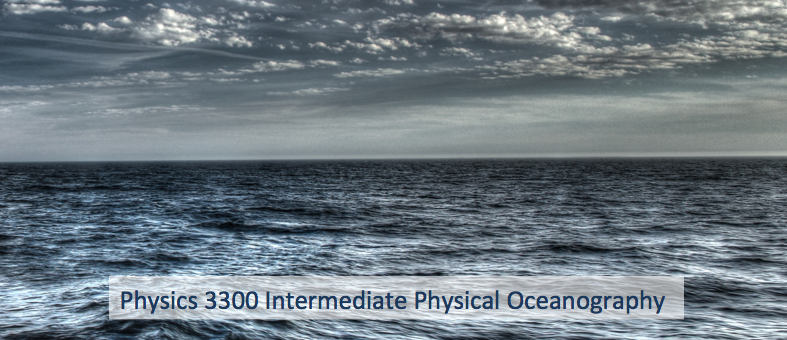
|
Brad deYoung Physics Memorial |
The instructor for this course is Brad deYoung who can be found in C-4062. The course deals with the physics of the processes in the ocean, providing an integrative view of the field of oceanography. The importance of physical processes to other aspects of oceanography is treated. Our goal is to learn about some of the key features of how the ocean works. Why do the large scale current systems look as they do? Why is the ocean stratified? How long does it take for water to move around in the ocean? How are the ocean and atmosphere coupled? What role does the ocean play in regulating the earth's climate? The NEW COURSE OUTLINE is now official
As available the course notes will be placed here. I will keep these updated just after each class.
Assignments When you submit your assignment, or any paper, please use the format P3300_Ass#_LastName.pdf for the file name.
Term Paper
Miscellaneous things Here is the text for the course - Stewart - Physical Oceanography.
A few cool videos and links to enjoy:
The article on salt fingers and double diffusion was published back in 1956 by Stommel. You can read the article here. Maruyama and colleagues did the expperiment, putting the pipe in the ocean and discovered that the upward velocity would be 212 m per day, which is about .212 cm/s, so not very fast.
|
Last updated 9 April 2020